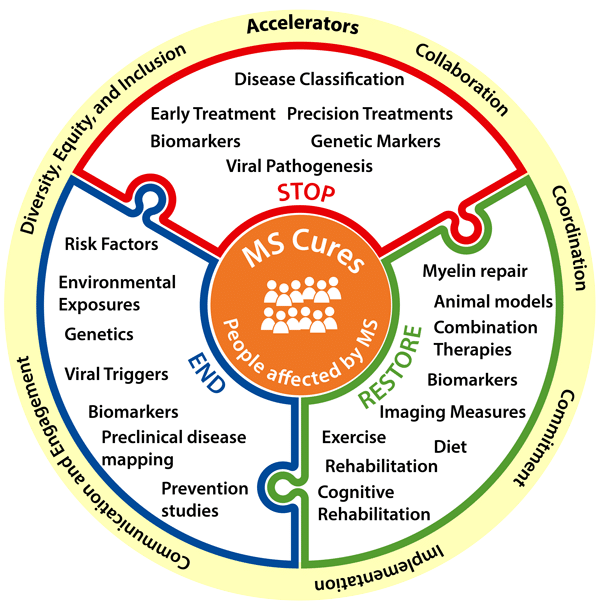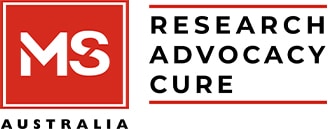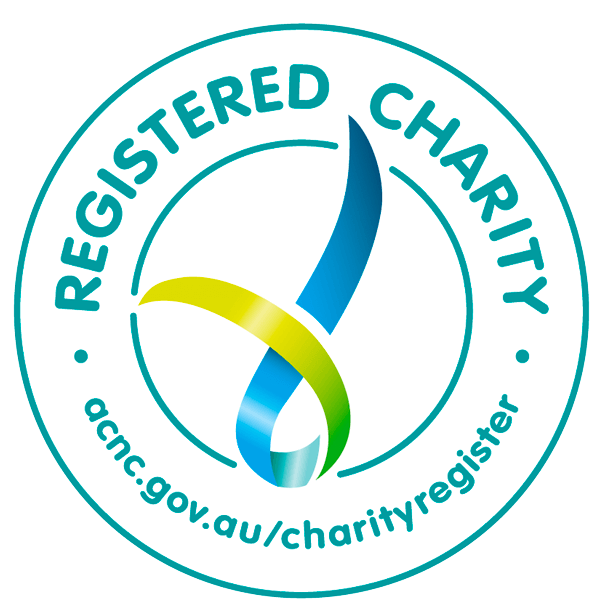 Updated Roadmap defines current research priorities based on new knowledge of the disease
Updated Roadmap defines current research priorities based on new knowledge of the disease
The Multiple Sclerosis Journal has published the next iteration of The Pathways to Cures Roadmap, which outlines research areas with the greatest potential to stop MS, restore function and repair damage from the disease, and end MS through prevention. The updated Roadmap accounts for recent scientific advances and provides recommendations which could accelerate progress toward cures through enhanced global collaboration.
The original Pathways to Cures Roadmap, which was published in 2022, was refined during a global summit of nearly 200 academic and industry scientists, healthcare providers, policy makers, funders and people with MS from 15 countries. More than 30 MS Societies, Allied Groups and professional organisations have endorsed the Roadmap.
In addition to outlining the research needed for each specific pathway (Stop, Restore, and End), the Roadmap also identifies key factors that will accelerate research progress, including lowering barriers to global data sharing, enhancing collaboration, committing to sustained funding, engaging regulators and payers to ensure access to research breakthroughs, engaging people with MS, and committing to health equity and inclusion in the global MS movement.
Bruce F. Bebo Jr., PhD, lead author of the updated Pathways to Cures Roadmap paper and Executive Vice President of Research, National MS Society says we continue to make important advances in MS research since the first Roadmap was published, which is why we brought together experts from around the world to help update research progress and priorities
“Curing MS will take a global effort, and for the first time, many of these global MS organisations are aligning their research agendas to the refined Pathways to Cures Roadmap, giving us all a better opportunity to uncover treatments and cures more quickly,” Mr Bebo said.
MS Australia CEO Rohan Greenland says that as a partner and joint leader in this important global initiative, MS Australia remains steadfast in its commitment to collaborating with other MS organisations to fast track the cures for MS.
“The updated Roadmap is a reflection of the advancements being made in the area of MS Research and our increased understanding of the disease, and in turn, the need, not just for an updated roadmap, but continued international collaborative research efforts that will get us down the pathways to cures as fast as possible,” Mr Greenland said.
As part of the Roadmap update, a Global Landscape Assessment was conducted to better understand the MS research currently funded by governments and MS advocacy organisations. The Assessment was also published in the Multiple Sclerosis Journal, highlighting the distribution and topics of more than 2,300 research projects valued at nearly $2 billion, and beginning to suggest where the MS community should focus to increase potential impact for current and future research.
Kathy Smith, KES Business Consulting, LLC, and a contributing author of the original Pathways to Cures Roadmap says the greater emphasis on enhancing collaboration – not just with other MS organisations, but with other fields as well – will open up doors for so many discoveries that will change lives.
“Just knowing that the MS research community continues to focus on cures and adjust based on new findings, brings those of us living with this disease so much hope that we are closer to a cure every day,” Ms Smith said.
Alvaro Cobo-Calvo, PhD, neurologist at the Multiple Sclerosis center of Catalonia (CEMCAT), and Mar Tintoré, PhD, president of ECTRIMS, authored an editorial piece in the publication, highlighting the importance of these papers.
“The strategies outlined in both articles published in this issue of the Multiple Sclerosis Journal provide a clear and comprehensive approach to tackling MS from multiple angles. The complementary survey highlights the current funding landscape and stresses the importance of international collaboration and transparency in funding. Addressing the barriers to data sharing and ensuring sustained funding are critical steps toward accelerating MS research. By focusing on these areas, we can drive significant advancements in the quest to cure MS, ultimately improving the lives of those affected by this debilitating disease.”
Both papers and the editorial piece can be found in the September issue of Multiple Sclerosis Journal, and will soon be available to access without payment.




